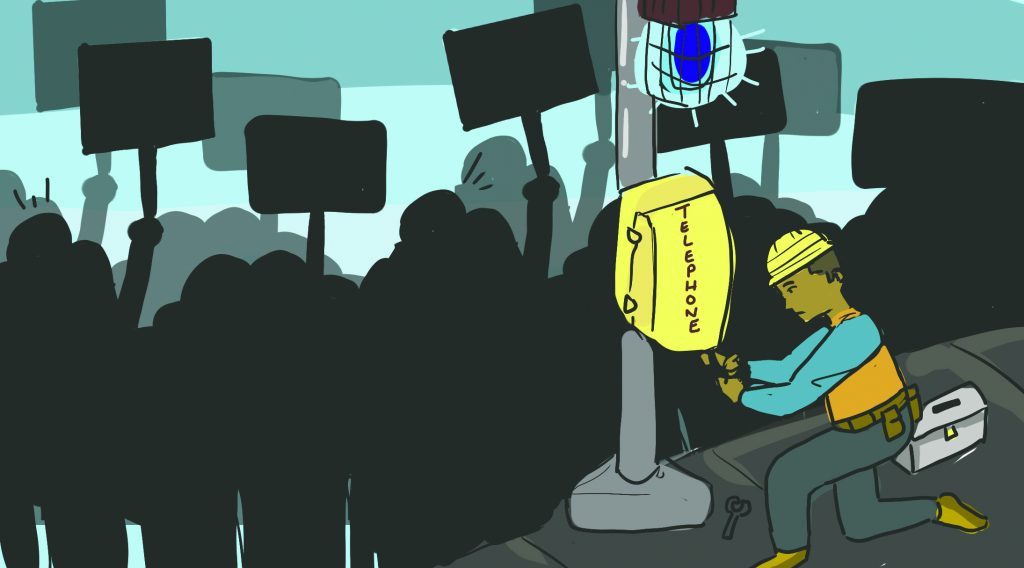Since the announcement that the city of Binghamton will soon install a blue-light system on the West Side, tensions have erupted.
The system’s proposed installation received sharp criticism from Justice and Unity for the Southern Tier, a local advocacy nonprofit group, which argued that it prioritizes student safety over the safety of low-income and minority residents. The Frances Beal Society, a student coalition, addressed similar concerns and more at a discussion in front of Science I on Monday, and will be participating in a sit in at the Couper Administration Building on Thursday.
The Frances Beal Society believes that Binghamton University is neglecting more pressing student issues, including sexual assault and mental health, and instead implementing an ineffective, yet tangible, system that serves more as a “PR stunt” than a genuine safety remedy. Furthermore, the group has stated that the blue lights will exacerbate issues of racism, police brutality and community division.
We doubt the effectiveness of the expansion of the proposed blue-light system. Frequently, as an editorial board, we try and look for solutions in what seems to be turmoil or chaos. We might not always have the correct answer, but we try to see the productive possibilities in a situation. Here, however, we are at a loss.
Whether or not the University funded the project as a symbolic — but empty — gesture, or as a genuine attempt to ensure student safety, the result is the same. The system’s announcement has yet again highlighted a deep divide between the University’s priorities and those of its students. Students of color and their allies have been advocating for years to achieve recognition from the University, and we consistently see that the University falls short in listening to their concerns.
The University may see blue lights as an honest effort to enhance student safety off campus. But, the system connects students directly with police — authority figures many students at BU do not feel represented or protected by. Instead, some students see police officers as a threat to their own well being. When a safety strategy ignores or further endangers members of the campus community, going ahead with that plan only affirms the University’s comfort with ignoring large portions of the student body and gives that a one-size-fits-all solution to the complex issue of personal safety.
And students are speaking out. The issue has seen a range of protests, with seemingly no conclusion in sight. Students are voicing their opinions on student safety and this would be a prime time for the administration to listen. If students feel their sentiments are being ignored, it is important for the University to acknowledge this by participating in a constructive dialogue.
Everyone has a different definition of what safety means to them as well as the situations and spaces in which they feel safe. Blue-light systems are not a solution because they do not respect a legitimate concern of an important segment of the student body. Rather than seeing protests as a road block, the University needs to recognize an opportunity to collaborate with students to understand how to productively protect them.



